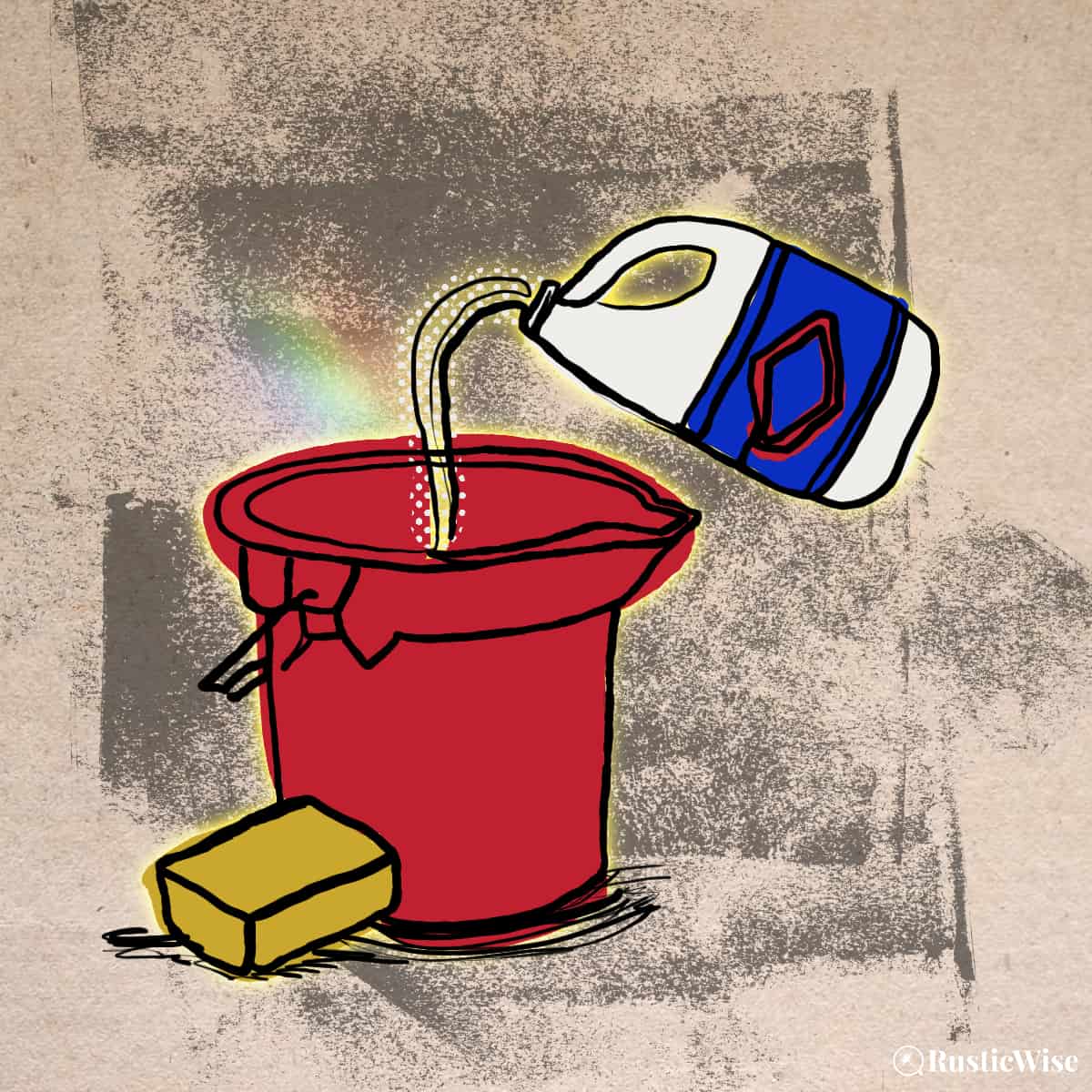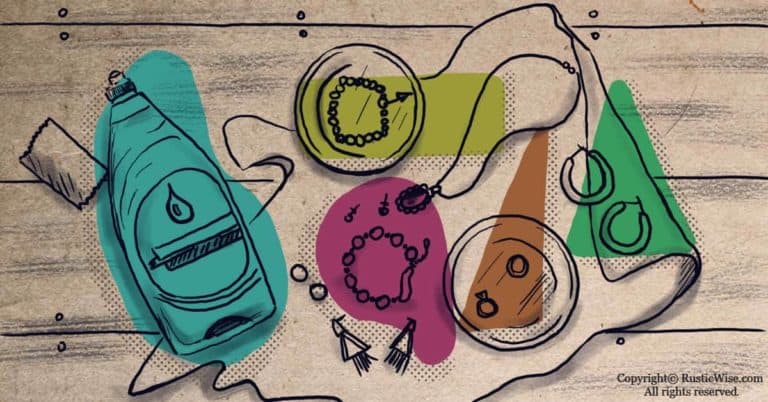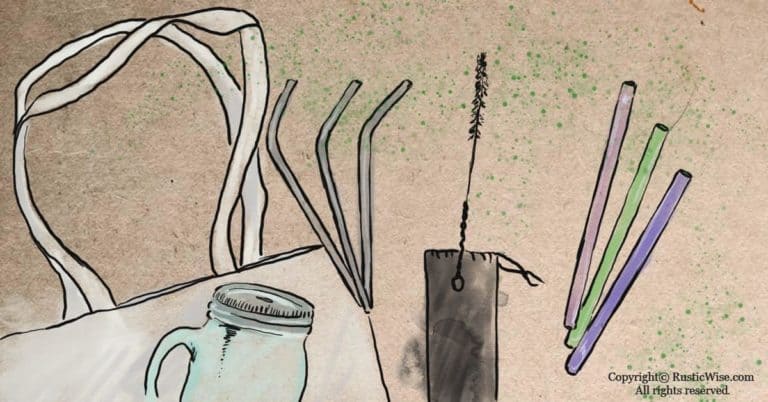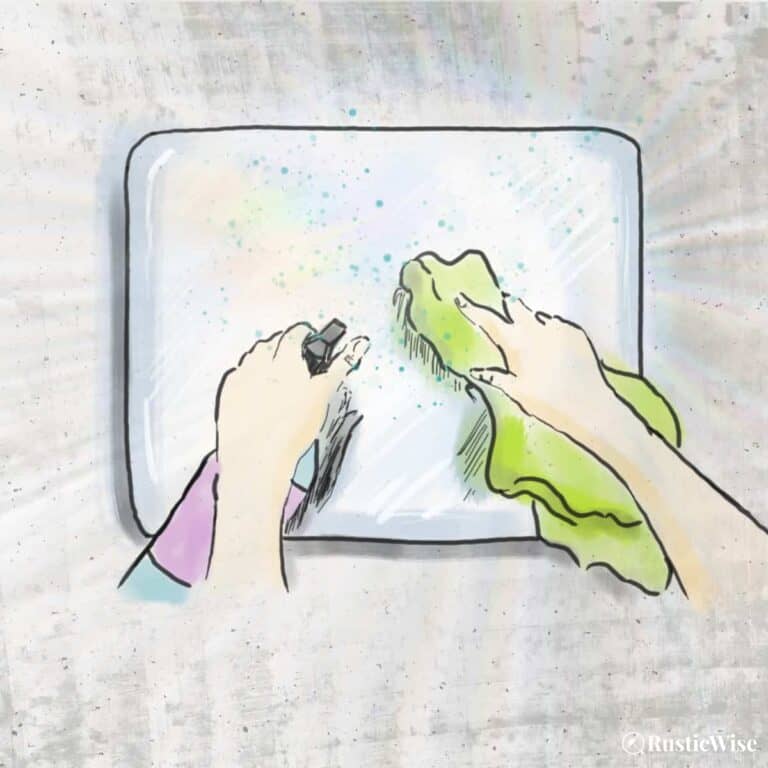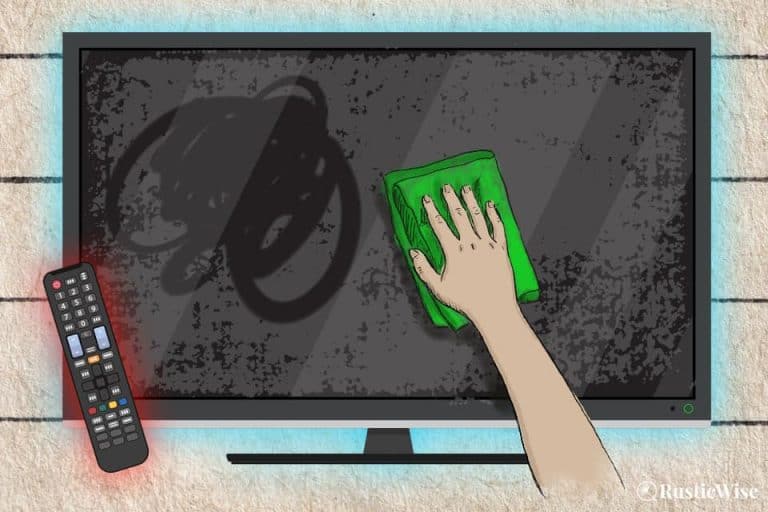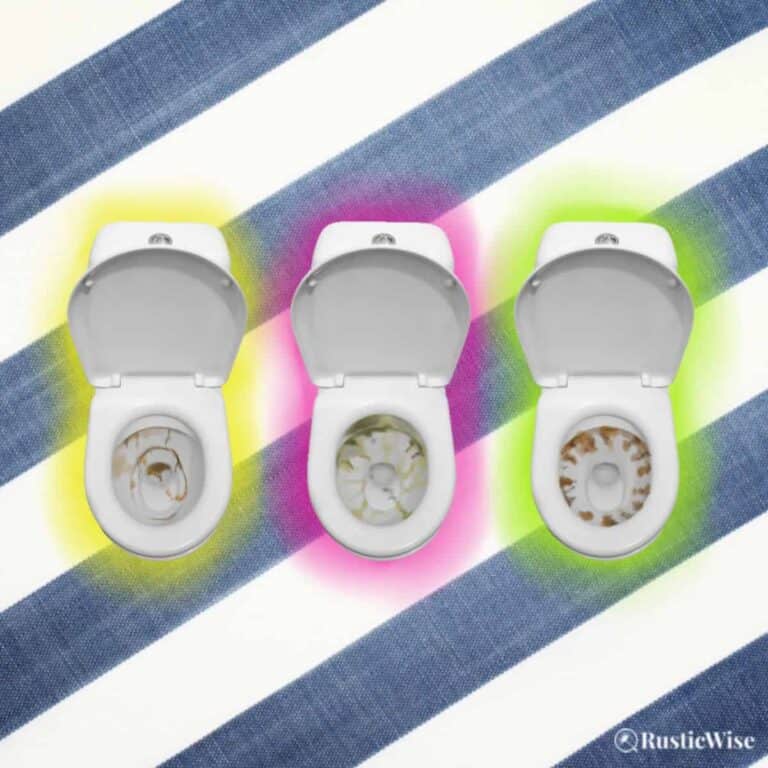How Much Bleach Is Needed To Clean and Disinfect? Here’s a Dilution Chart
Cleaning and disinfection are two critical parts of keeping your home clean and healthy. This is especially important during cold and flu season. Besides, germ-free surfaces and clothing provide peace of mind.
If you’re looking to clean and disinfect to prevent the spread of illness, how much bleach is needed to clean? Here are some handy dilution ratios. Most household bleach contains between 5 and 9 percent of sodium hypochlorite (the main active cleaning ingredient). The CDC recommends making a bleach solution of 4 teaspoons of bleach per quart of room temperature water, OR, 5 tablespoons of bleach per gallon of water.¹
I’ll cover the most common concerns when using liquid bleach with water and what the effective dilution ratios are for different concentrations of bleach. Roll up your sleeves and let’s take a deep dive into how to safely use chlorine bleach (and whether you really need to).
Do you need to use bleach to clean?
Simply put, no, bleach is NOT needed for day-to-day cleaning. Plain, mild soap is all you really need to remove dirt, grease buildup, and other debris. In fact, bleach is not an effective cleaner at all.
However, this bottle of cleaning solution does pack a powerful punch to kill germs, bacteria, and viruses (including Covid-19). You should use bleach only after you have thoroughly cleaned a surface.
Let’s go some of the key differences between the terms clean, sanitize, and disinfect, according to the CDC.²
- Clean: The act of using normal soap and water to scrub away dirt and debris—no bleach required! Cleaning is always the first step before proceeding to sanitization, or disinfection.
- Sanitize: Reducing the level of germs to a safer level as set out in accordance with public health guidelines. You sanitize surfaces using weaker bleach solutions or sprays.
- Disinfect: This is the highest level of cleanliness and involves killing most germs and viruses on surfaces. You’ll need to break out the big guns to do the job—stronger bleach solutions or chemicals.
Tip: Stick with unscented household bleach to avoid further irritants from artificial fragrances found in scented bleaches.
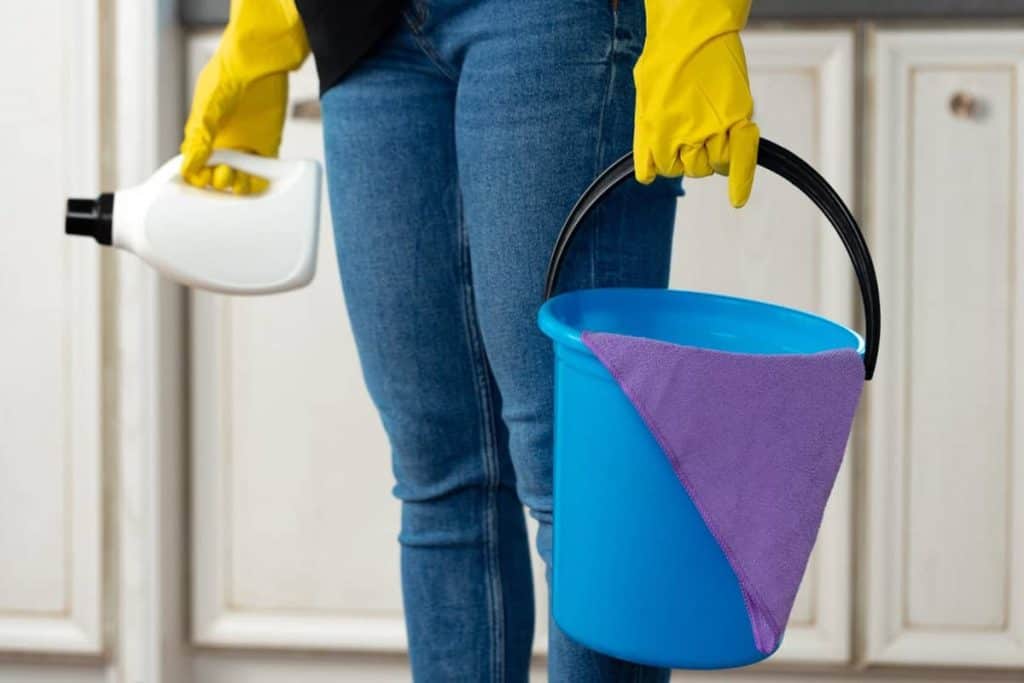
Is bleach safe to use at home?
Common household bleach is something most people have at home. The U.S. Environmental Protection Agency (EPA) states that bleach is safe to use for everyday household applications with proper use.³ When used properly, and diluted with the correct ratio of clean water, it’s a highly effective disinfectant.
Because of its chemical makeup, care and caution should be practiced when using household chlorine bleach. The strong chemical kills germs and bacteria on many surfaces, which is helpful in sanitizing countertops, bathrooms, and other high-touch areas.
However, bleach is also a toxic and corrosive substance. It’s important to take precautions when using bleach around pets or children. So before using it, read up on bleach safety to ensure the safety of all family members.
Bleach safety tips
From getting stains out of clothes to making the bathroom smell better and getting rid of mold and mildew, it’s a product that has a range of household uses. Let’s look at how to use this household cleaner safely.³
- Only mix it with water: The number one way to stay safe with bleach is to NEVER mix it with any other cleaning product, especially those with ammonia. When bleach and ammonia combine, they create deadly fumes. It’s also not safe to mix bleach with acids (such as vinegar or strong cleaning solutions). Many commercial cleaners contain a chemical cocktail so it’s best to avoid mixing together.
- Wear protective gear: As you know, bleach is highly corrosive. When handling bleach, wear rubber gloves to protect your hands, eye protection, and old clothing to protect your skin.
- Ventilate the room: Crack open a window to allow for fresh air circulation. It’s also smart to wear a mask if you have respiratory issues as it will keep you from breathing in any fumes. Many people are sensitive to the slight chlorine odor.
- Store it in a safe place: Keep your bleach bottle somewhere out of reach of children and pets.
- Dilute it properly: NEVER use chlorine bleach at full strength. You don’t need huge amounts of bleach to disinfect surfaces. This could damage fabrics or surfaces around the house. Follow dilution instructions on the bottle, or use the table below as a reference.
Tip: To allow bleach to do its job, make sure you clean FIRST before sanitizing/disinfecting. Scrubbing with a cleaning brush or cloth will help loosen any dirt that is on the surface.
How much bleach is needed to clean and disinfect?
Proper use of diluted bleach is based on the amount of sodium hypochlorite (the main active cleaning ingredient) to water ratio. The recommended guideline is to use a 0.12 percent sodium hypochlorite solution.⁴
But what does this mean in practical terms?
As mentioned earlier, the concentration of sodium hypochlorite found in household chlorine bleach can vary (typically between 5 and 9 percent). Creating the proper dilution would therefore depend on what this percentage actually is.
Luckily, we’ve created a handy bleach dilution chart on disinfecting hard surfaces based on info from Michigan State University.⁴
Bleach Dilution Chart
| Sodium Hypochlorite Concentration in Bleach | Amount of Bleach | Amount of Cool Tap Water |
|---|---|---|
5 percent | 1 ¼ teaspoons (6 mL ) | 1 cup (240 mL) |
| 6 percent | 1 teaspoon (5 mL) | 1 cup (240 mL) |
| 7 percent | Slightly less than 1 teaspoon (4.5 mL) | 1 cup (240 mL) |
| 8 percent | ¾ teaspoon (3.75 mL) | 1 cup (240 mL) |
| 9 percent | ¾ teaspoon (3.5 mL) | 1 cup (240 mL) |
| 10 percent | ¾ teaspoon (3.5 mL) | 1 cup (240 mL) |
Need to whip up a bigger batch of bleach? The CDC recommends using 5 tablespoons of bleach per gallon of water.¹
Tip: You’ll need to whip up a fresh batch of bleach each time you want to disinfect surfaces. The potency of the solution is reduced within 24 hours.
How to use bleach to disinfect hard surfaces
Ready to banish germs and viruses? Here’s how to use bleach for disinfecting non-porous surface. Use these steps to clean a variety of hard surfaces in areas around your home including garbage bins, countertops, or door knobs.
Note: Bleach can damage some types of wood, or some types of metals including stainless steel.
- Clean any hard surfaces first using a mild soap, water, and a soft cloth or sponge.
- Prepare a diluted bleach solution using the chart above. Pour into a spray bottle.
- Spray bleach onto the surface you wish to disinfect. Let it sit for at least 5 minutes. This sitting time is important—it allows bleach to work its magic. While the CDC now recommends 1 minute of contact time for disinfecting, this was reduces from their previous recommendation of 5 minutes. I prefer to play it safe, so I’m sticking with 5 minutes!
- Wipe clean with a cloth.
- Rinse with warm water. Let the surface air dry.
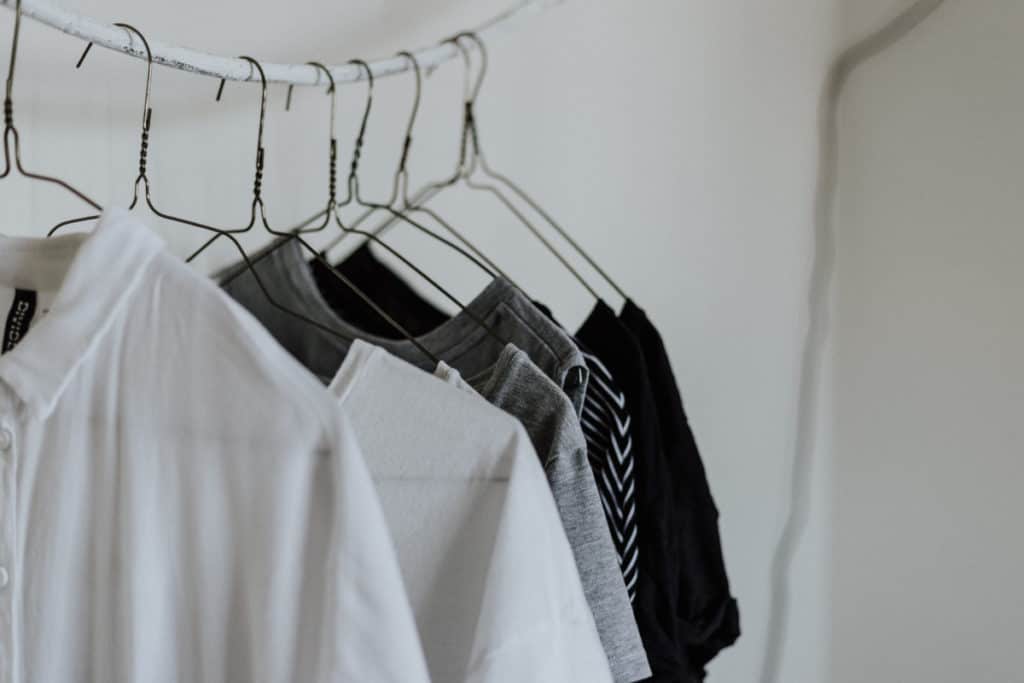
How to use bleach for laundry
Want brighter, stain-free clothes? Many people turn to bleach for this. BUT. . . personally, I rarely use it for laundry.
I find that other less toxic products do the job well. You can soak your clothes in vinegar to brighten fabrics, or use baking soda to deodorize and remove some stains.
And, for spot treatment of stains, I like the power of hydrogen peroxide, which is gentler than bleach, but still effective.
But on rare occasions, bleach can come in handy to launder the grodiest, nastiest clothes that you’re on the verge of tossing.
- Always dilute bleach before applying to clothes.
- Do a patch test to see if a fabric is bleach-safe. When you’re in doubt, it’s a good idea to test a small area of the item you’re trying to clean to make sure doesn’t react.
- Clorox recommends adding ½ cup of bleach to a standard washer, OR ¼ cup of bleach to a high efficiency machine to sanitize laundry. Select a hot water cycle with an extra rinse for good measure. Add bleach and detergent when washer is roughly half full before adding laundry.⁵
How to use bleach in the kitchen
When working with raw foods, it’s a good idea to disinfect cutting boards (especially after cutting raw meat, fish, or poultry).
Both plastic and wooden cutting boards can be safely disinfected with bleach according to the USDA. Mix 1 tablespoon of unscented, liquid chlorine bleach with 1 gallon of water. Spray the surface with the bleach solution and allow it to stand for at least 5 minutes. Rinse with clean water and let it air dry or pat dry with clean paper towels.⁶
Disinfecting with bleach in the bathroom
Many people like to use bleach to make your toilet bowl sparkling clean, but I generally like to steer clear of this. Why? I find that regular, non-toxic ingredients such as vinegar, baking soda, and occasionally borax can remove most common toilet bowl stains. (Seriously!)
There are however exceptions to this guideline, such as when you are dealing with mold or mildew in your toilet.
In this case, you can whip up the following bleach solution.
You’ll need:
- ¾ cup of household bleach
- 1 teaspoon of liquid dish soap or Castile soap
- 1 gallon of water
Combine solution in a bucket.
Warning: Some people pour bleach into the toilet tank, in the hopes of having a cleaner toilet with every flush. But this is NOT recommended. Doing this can weaken rubber components causing them to become brittle and eventually break.
Related questions
Does bleach expire?
Yes, a bottle of bleach is best used within 12 months of the manufacture date.⁴
How do you dispose of a used bleach solution?
After you’ve finished disinfecting, wait 24 hours (as bleach loses its potency in this timeframe). Then dilute it with plenty of water (gallons of water depending on how much you’re dumping) and you can safely dispose of it down the drain. BUT, if you have a septic system, never pour any bleach down the drain—dispose of it at a waste disposal facility.
👉 If you like this post, see other Timeless Cleaning Tips You Need To Know. 🌟
Would you like more timeless tips via email?
Fun tips to help you live an independent, self-sustaining lifestyle. Opt-out at any time.


References
- Centers for Disease Control and Prevention (CDC), Everyday Cleaning, https://www.cdc.gov/hygiene/cleaning/. Accessed February 2023.
- Centers for Disease Control and Prevention (CDC), When and How to Clean and Disinfect Your Home, https://www.cdc.gov/hygiene/cleaning/cleaning-your-home.html. Accessed February 2023.
- Chemical Safety Facts, Chlorine Bleach/Sodium Hypochlorite Solution, https://www.chemicalsafetyfacts.org/chemicals/chlorine-bleach-sodium-hypochlorite-solution/. Accessed February 2023.
- Michigan State University, COVID-19 – Disinfecting with Bleach, https://www.canr.msu.edu/news/covid-19-disinfecting-with-bleach. Accessed February 2023.
- Clorox, How to Use Bleach in Laundry to Clean, Whiten, Remove Stains and Sanitize, https://www.clorox.com/learn/how-to-use-bleach-in-laundry/. Accessed February 2023.
- USDA, Cutting Boards and Food Safety, https://www.fsis.usda.gov/wps/portal/fsis/topics/food-safety-education/get-answers/food-safety-fact-sheets/safe-food-handling/cutting-boards-and-food-safety/ct_index. Accessed February 2023.

Author: Theresa Tesolin
Theresa is co-founder of RusticWise. She helps people unleash their inner DIY spirit by encouraging them to get dirty and make or grow something from scratch.

